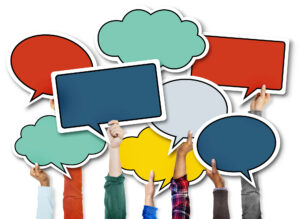 If you’re serious about wanting to become a better communicator and you haven’t yet read or listened to the book Supercommunicators: How to Unlock the Secret Language of Connection, please check it out.
If you’re serious about wanting to become a better communicator and you haven’t yet read or listened to the book Supercommunicators: How to Unlock the Secret Language of Connection, please check it out.
The award-winning author Charles Duhigg has written a clear, comprehensive, and practical guide about how to communicate well with others. The book is admirable on several fronts: it features up-to-date deep communication research, the research is synthesized succinctly and supplemented with engaging stories and concepts, and the content is actionable.
By reading this one book you can gather enough tips to make a noticeable improvement in your communications. How do I know? I’ve read almost all of the books and research papers that Duhigg summarizes and cites. Supercommunicators is the most thorough and explicit book on individual communications right now. Even though communications is something we humans all do daily – and often not all that well – researchers only recently (that is, in the past decade or so) have started studying everyday communications.
Besides being an excellent writer, Duhigg has introduced several concepts that make the book even more useful. For example, he has defined what supercommunicators do that makes them more effective communicators. According to him, supercommunicators focus on others, not themselves, when communicating. This means that supercommunicators pause, consider who they’re communicating with, listen intently, and also:
- Recognize that the goal of communicating is to connect and engage with others. We humans are prosocial, and if we can align with others, we’ll automatically nonconsciously connect with our bodies and brains. Our eye pupils will dilate at the same rate, our breath patterns will synchronize, our heart rates will match, and our brainwaves will be in harmony.
- Ask 10 to 20 times more questions than the average person. Also give cues to others to invite them to continue talking, such as “That’s interesting. Tell me more.”
- Notice patterns, especially around the types of conversations people want to have. Duhigg highlights three types of conversations, each with a different purpose, focus, and response: 1) the practical conversation – “What are we talking about and what are we going to do?” 2) the emotional conversation – “Do you understand and can you empathize?” and 3) the social conversation – “Who are we? And how do we relate to each other and to society?”
- Be self-aware and quickly adjust to which of these types of conversations is taking place to be aligned with the other person. According to Duhigg, it’s very easy to miscommunicate as well as upset the other person if you think you’re having one type of conversation and they’re having (From my perspective, this is one of the most valuable insights of the book. So many times I just assumed a conversation was about practical things to get something done. However, in retrospect, the other person wanted an emotional conversation. Talk about colliding purposes with collateral damages! )
- Pay attention to stories people tell, especially the middle of the story, which can give you incredible insights about an individual or a situation.
- Be intentional about which communication channel to use and match the channel with the message. For example, if you want to make a sarcastic comment, call someone or talk to them in person; don’t expect them to get your sarcasm in a text.
- When faced with conflict, take specific actions to address and deal with potential clashes. The three most valuable actions are: 1) show the other person you’re listening by looping for understanding; 2) make sure your environment is conducive for your conversation (the time of day, the location, and you and your conversation partner are rested and fed so no one is “hangry”; and 3) set boundaries for what you’re going to discuss. (Looping for understanding is also a helpful tool for ways to increase psychological safety. Looping is number 12 on this list.)
- Be present when you’re communicating as well as being real and vulnerable, which makes others more comfortable with you. For example, Duhigg expressed his vulnerability in how this book came to be through this passage: “I wrote this book for myself. After I had failed as a manager at work and was wondering why I had become someone who couldn’t seem to read cues or hear what others were saying, I realized I might need to reevaluate how I communicated.”
Even if you try just one or two of these tips, you can experience noticeable improvements in how you communicate. You can connect better, be more aligned and be more agile in your actions. That’s how powerful this book is.
And if you want to turn these tips into habits and feel you need some outside help getting the hang of habits, please read Dr. BJ Fogg’s book, Tiny Habits: The Small Changes That Change Everything or watch BJ’s Ted talks. BJ is far more knowledgeable on habits than Duhigg is, even though Duhigg is well known for his book, The Power of Habit, Smarter Faster Better. And as far as the other guy with the book on habits, he learned about habits from BJ and he seems more serious about selling books than explaining the science of habits.
So thank you BJ Fogg for creating Tiny Habits and thank you Charles Duhigg for writing Supercommunicators!

0 Comments